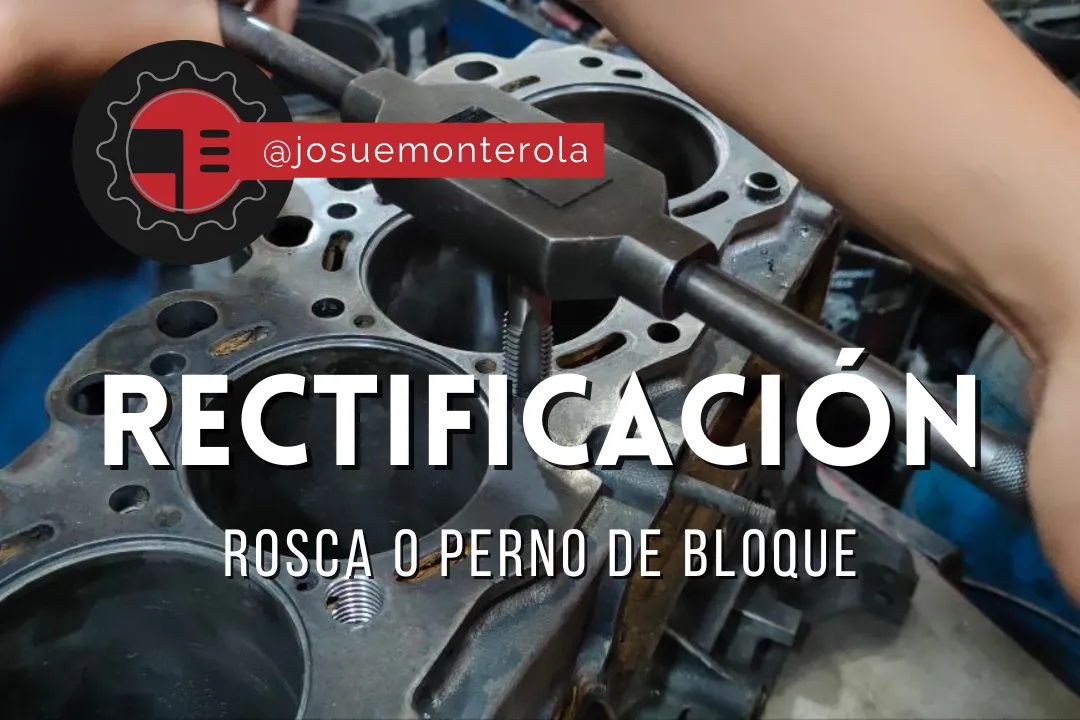
Hola chicos, ¿qué tal?
Una vez mas le comparto un trabajo de mecanica, específicamente en el area de rectificacion. Cuando un motor ha tenido varias reparaciones, sea por recalentado o reparacion total, los perno y rocas sufren debido al toque que se le da para ajustar o apretar, en el caso del perno es facil de reemplazar, pero no sucede lo mismo con las rocas o hilos cuando se dañan, y hay que hacerle un trabajo adicional.
Hay varios procedimientos para solucionar el problema de hilo, roscas o como le digan en tu region o pais, aqui en Ecuador se le conoce como hilos. Unos de los metodos o procedimientos mas faciles y mejores, es trabajar con helicoidales es el proceso que yo recomiendo hacer, cundo una rosca no ha sido rectificada o trabajada. y se preguntaran que es eso, se parece mucho a un resorte redondo y esta hecho de acero, es la mejor opción porque mantienes el perno orinal y te ahorras tiempo y dinero, unas de las ventaja de este proceso es para cuando el perno se saque nuevamente, el helicoidal no se salga por que tiene un solo sentido de enroscado.
Hi guys, how are you?
Once again I share with you a mechanical work, specifically in the area of rectification. When an engine has had several repairs, either by overheating or total repair, the bolt and rocks suffer due to the touch that is given to adjust or tighten, in the case of the bolt is easy to replace, but it is not the same with the rocks or threads when they are damaged, and you have to do additional work.
There are several procedures to solve the problem of thread, threads or as they say in your region or country, here in Ecuador it is known as threads. One of the easiest and best methods or procedures is to work with helicoidals, this is the process that I recommend to do, when a thread has not been rectified or worked, and you may wonder what it is, it is very similar to a round spring and it is made of steel, it is the best option because you keep the bolt orinal and you save time and money, one of the advantages of this process is that when the bolt is removed again, the helicoidal does not come out because it has only one way of threading.
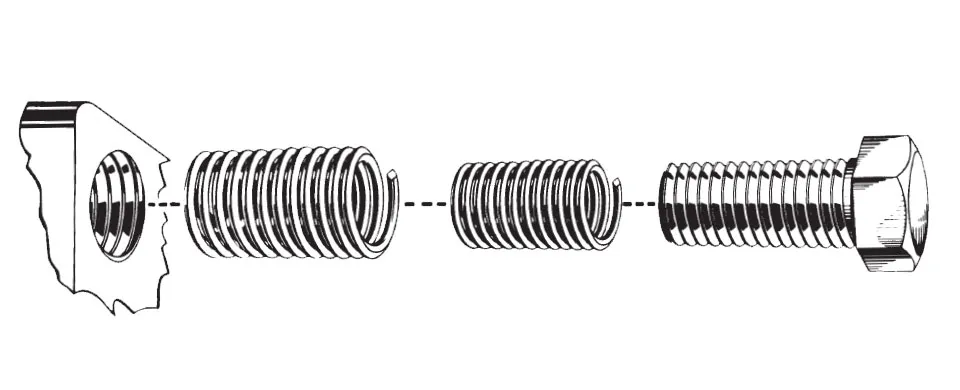
Fuente | Source
El otro metodo es agrandar el hilo o roca, para reemplazar el perno original por uno con una medida mayor, lo que requiere en el caso del bloque es agrando el orificio de la cámara o cabeza de motor para que pase el perno nuevo y requiere mucho mas tiempo, dinero y mayor precisión.
El otro proceso es hacer un tapón y este se realiza cuando no se puede hacer ningunos de los procesos anterior debido al daño de hilo o roca, o exita una fisura cerca de un pase de agua, a continuación les muestro el proceso como hacer y colocar un tapón.
The other method is to enlarge the thread or rock, to replace the original bolt with one with a larger size, which requires in the case of the block is enlarging the hole in the chamber or engine head to pass the new bolt and requires much more time, money and greater precision.
The other process is to make a plug and this is done when you can not do any of the above processes due to damage to thread or rock, or there is a crack near a water pass, then I show you the process how to make and place a plug.
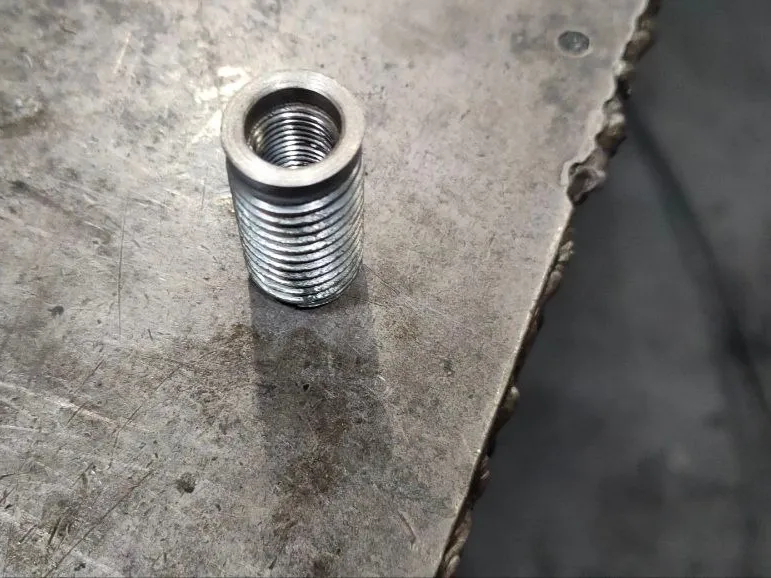
Lista de materiales y herramientas a utilizar:
-2 perno o tornillos de 3/4 de 2 pulgadas de largo con tuercas.
-Broca de 17mm
-machuelos de 3/4 con paso de hilo 10
-Broca centro
-Broca 7mm
-Broca 10mm
-Broca 12,5mm
-Machulos de 12mm con poso de hilo 1,25.
List of materials and tools to be used:
-2 2-inch long 3/4 bolt or screws with nuts.
-17mm drill bit
-3/4" studs with 10" thread pitch.
-Center bit
-7mm drill bit
-10mm drill bit
-Broca 12,5mm
-12mm bits with thread pitch 1,25.
Primer paso: centramos y perforamos el hilo del bloque con la broca 17mm a la profundidad requerida, yo marque con un corrector la broca para no pasarme de la profundidad.
First step: center and drill the thread of the block with the 17mm drill bit to the required depth, I marked the drill bit with a corrector so as not to exceed the depth.
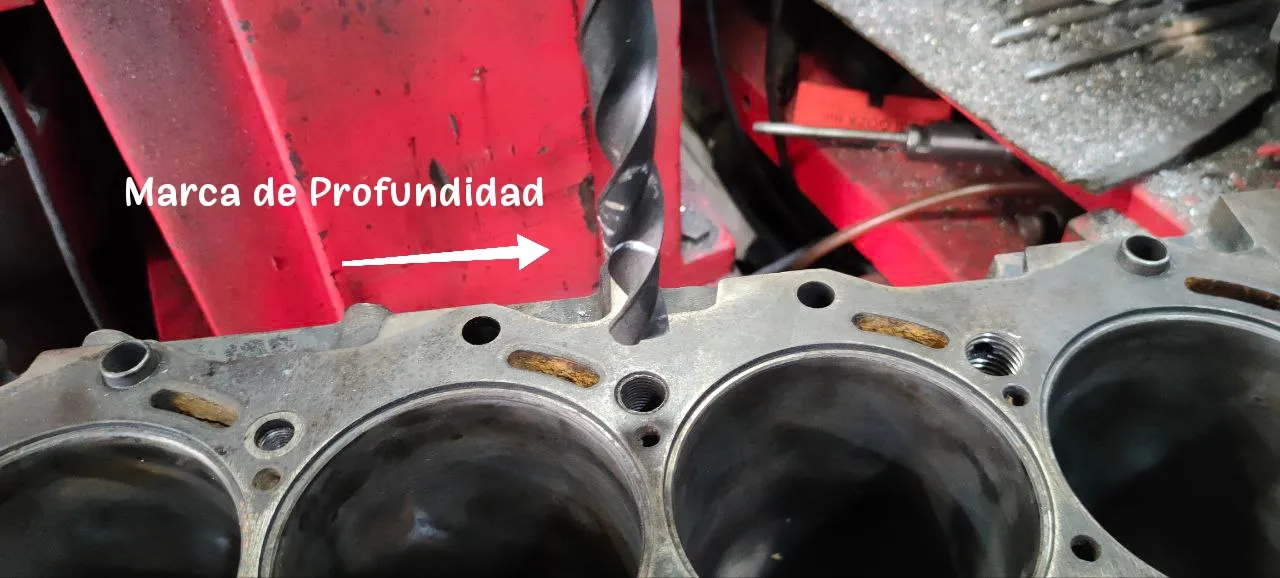
Segundo Paso: Pasamos los machuelos 3/4 para hacer el hilo, en bloque ya perforado con la broca 17mm.
Second Step: We pass the taps 3/4 to make the thread, in block already drilled with the 17mm drill bit.
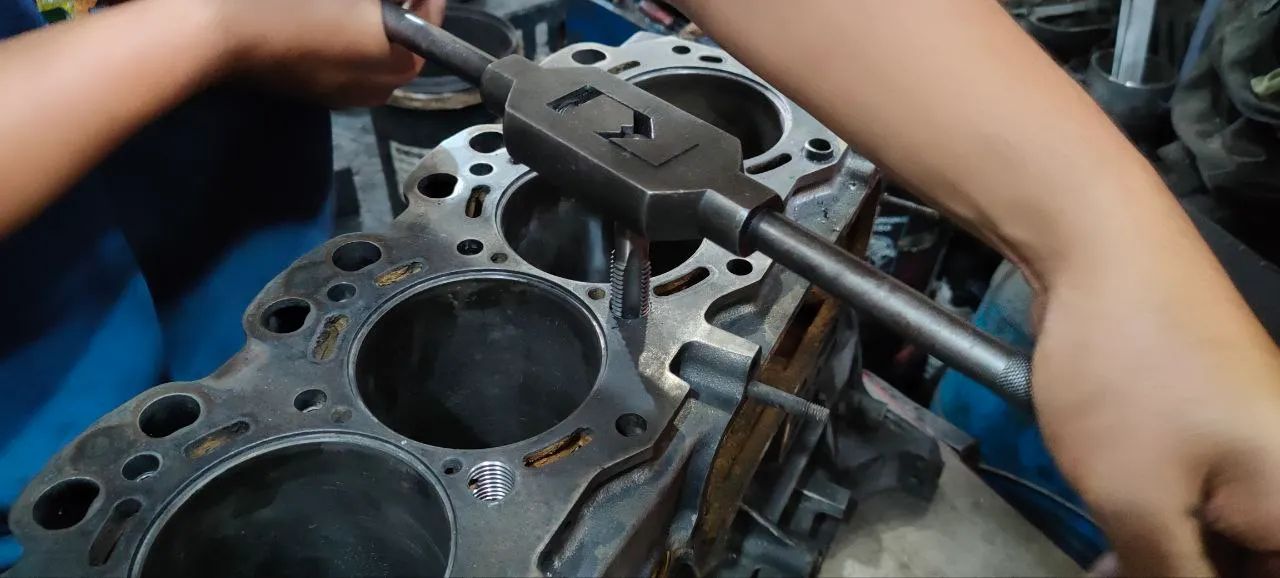
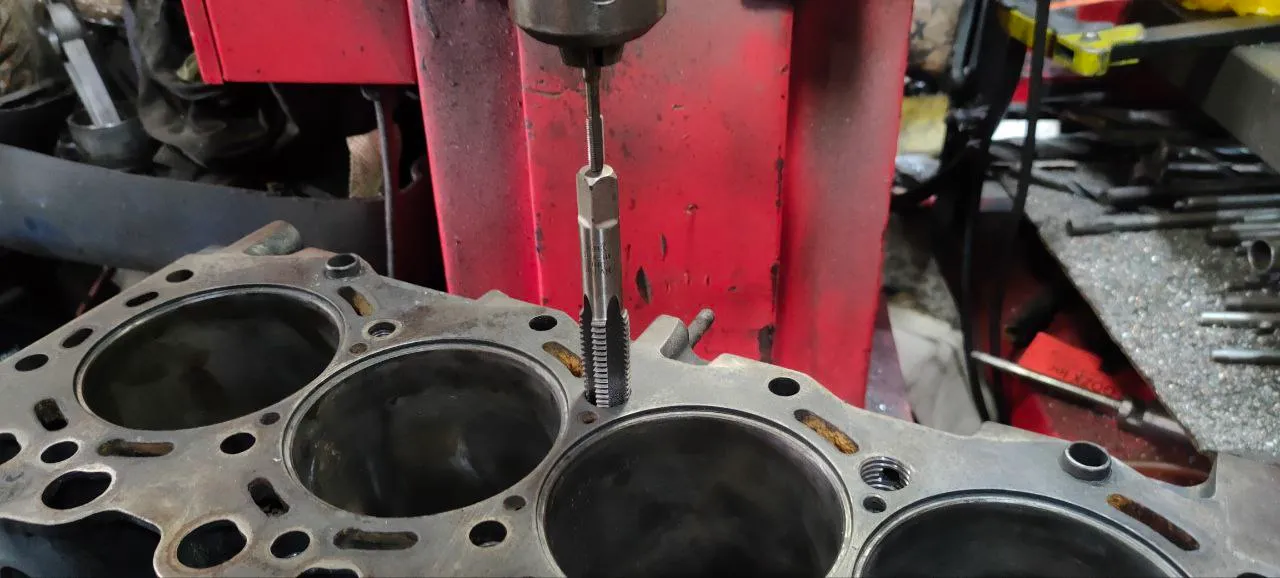
Tercer Paso: Probamos los hilos hechos con los pernos 3/4.
Third Step: We test the threads made with the 3/4 bolts.
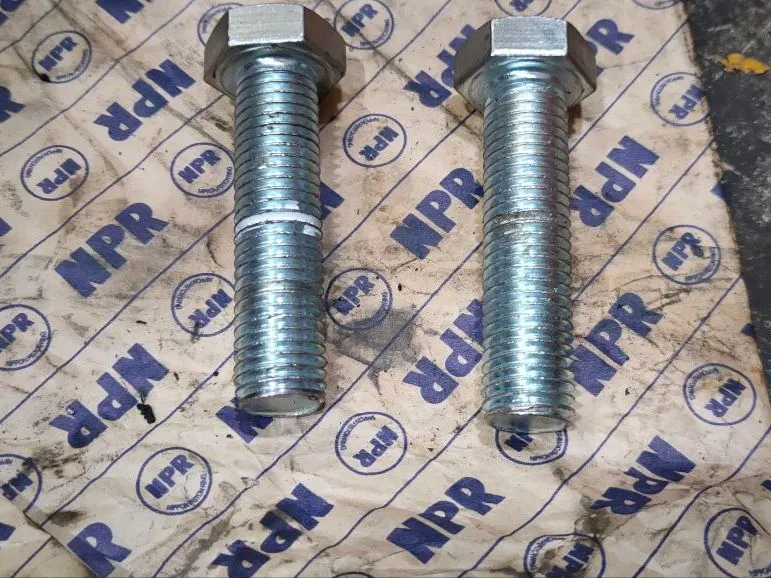 | 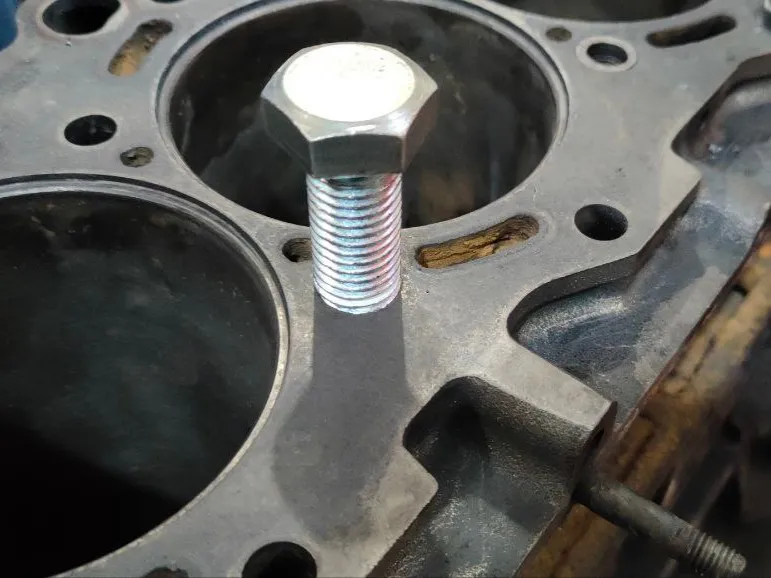 |
|---|
Cuarto Paso: Pasamos al torno para perforar los pernos 3/4, le colocamos cinta de papel o tirro para no dañar el hilo o roca de perno, una vez sujeto en el choque del torno, empezamos con la broca centro, despues la broca 7mm, después broca 10mm como medida final para el paso del machuelo 12mm, y solo unos poco milimetros la broca 12,5mm unas fotos del proceso.
Fourth Step: We went to the lathe to drill the bolts 3/4, we put paper tape or tirro to avoid damaging the thread or rock bolt, once subject to the shock of the lathe, we started with the drill center, then the drill 7mm, then drill 10mm as a final measure for the passage of the tap 12mm, and only a few millimeters the drill 12.5mm a few photos of the process.
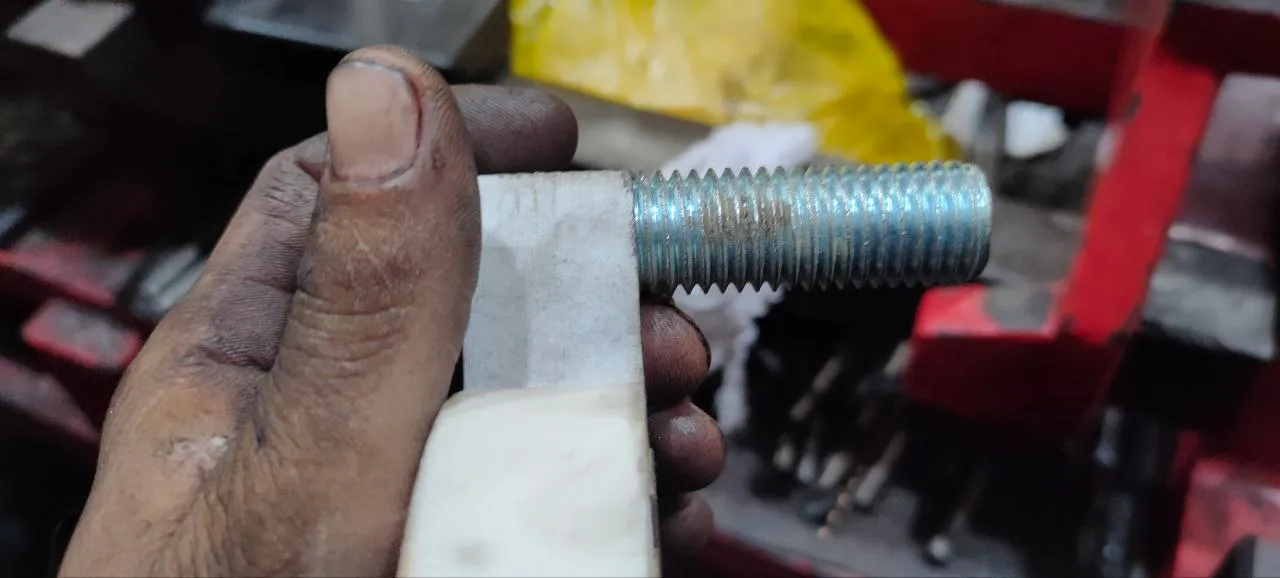
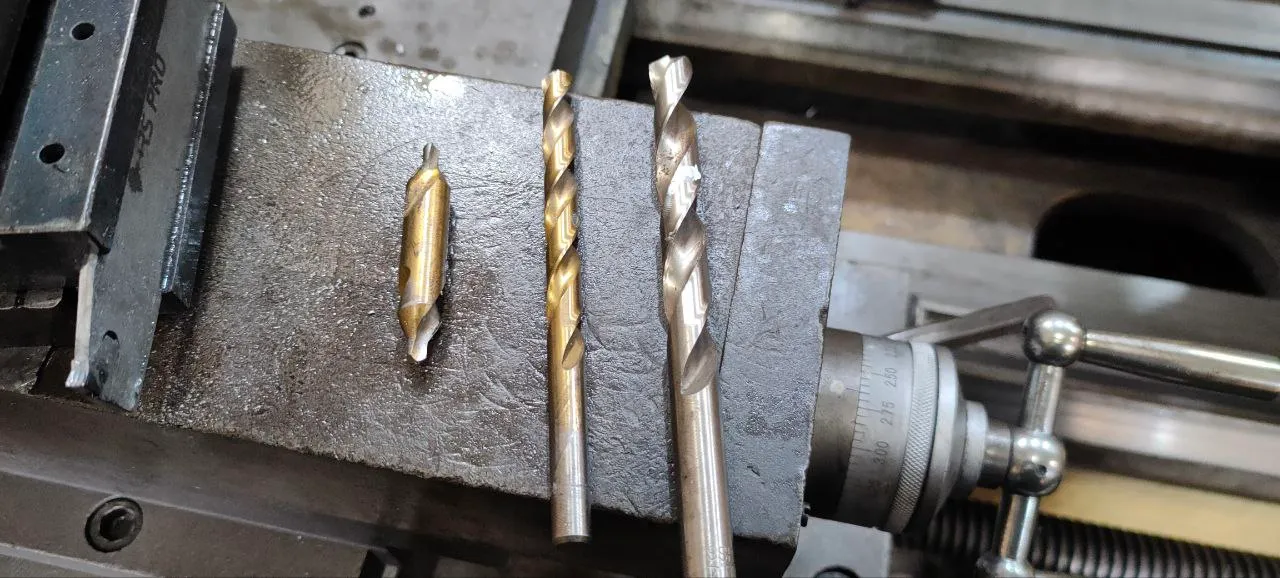
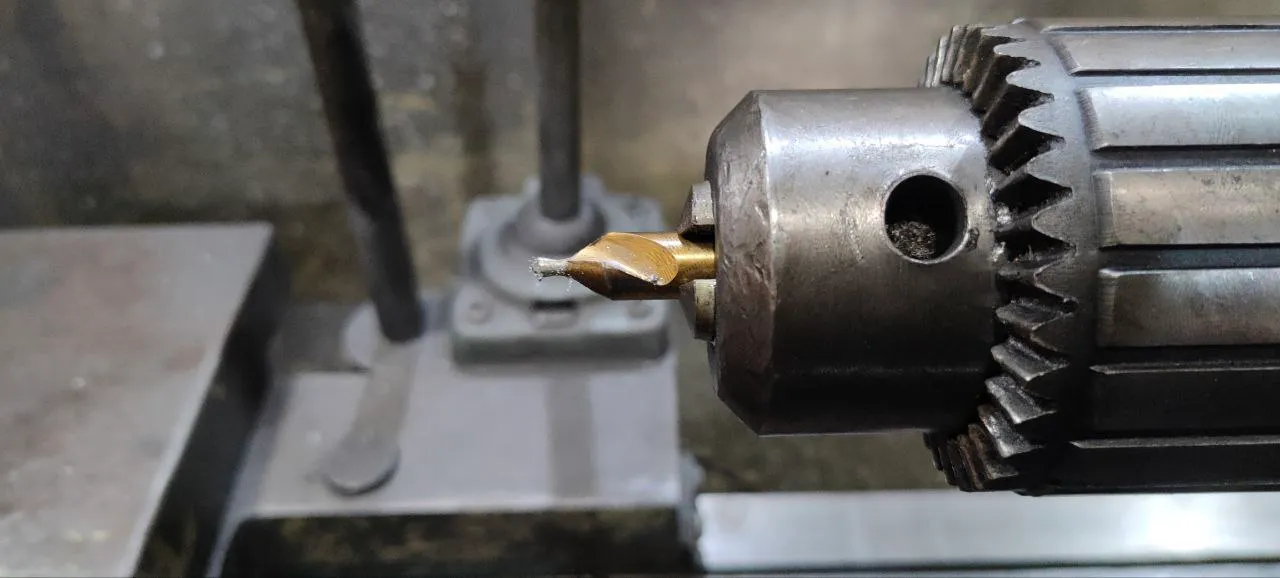
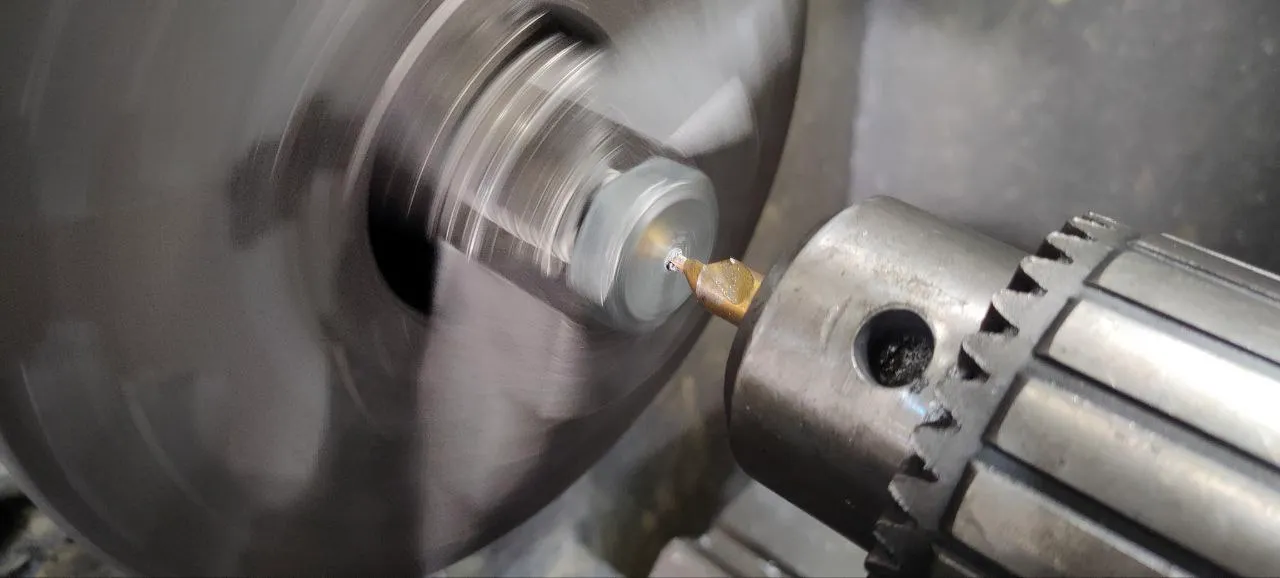
Quinto Paso: Sujetamos con la prensa el perno perforado para pasar el machuelo 12mm.
Fifth Step: We hold with the press the perforated bolt to pass the 12mm tap.
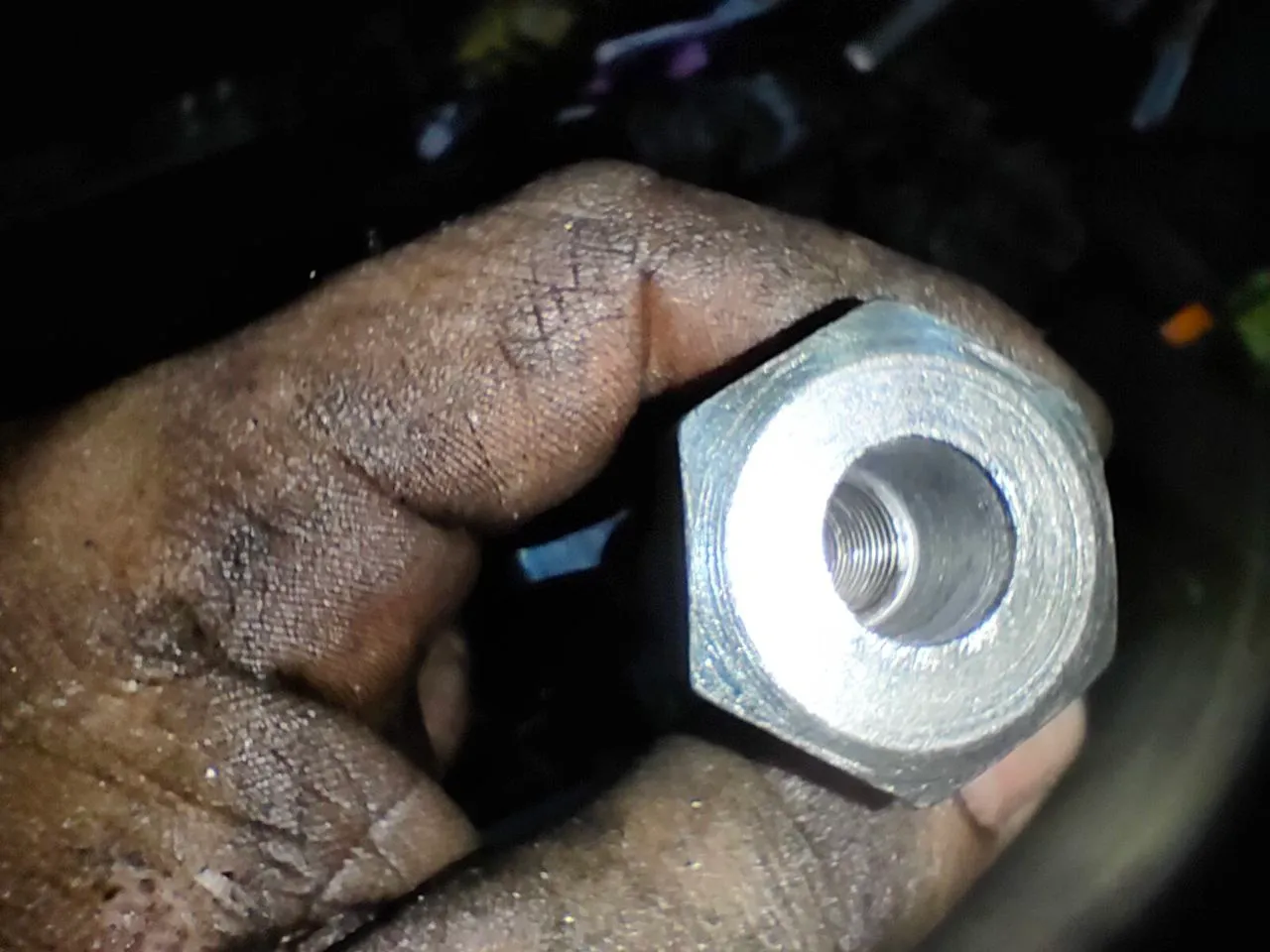

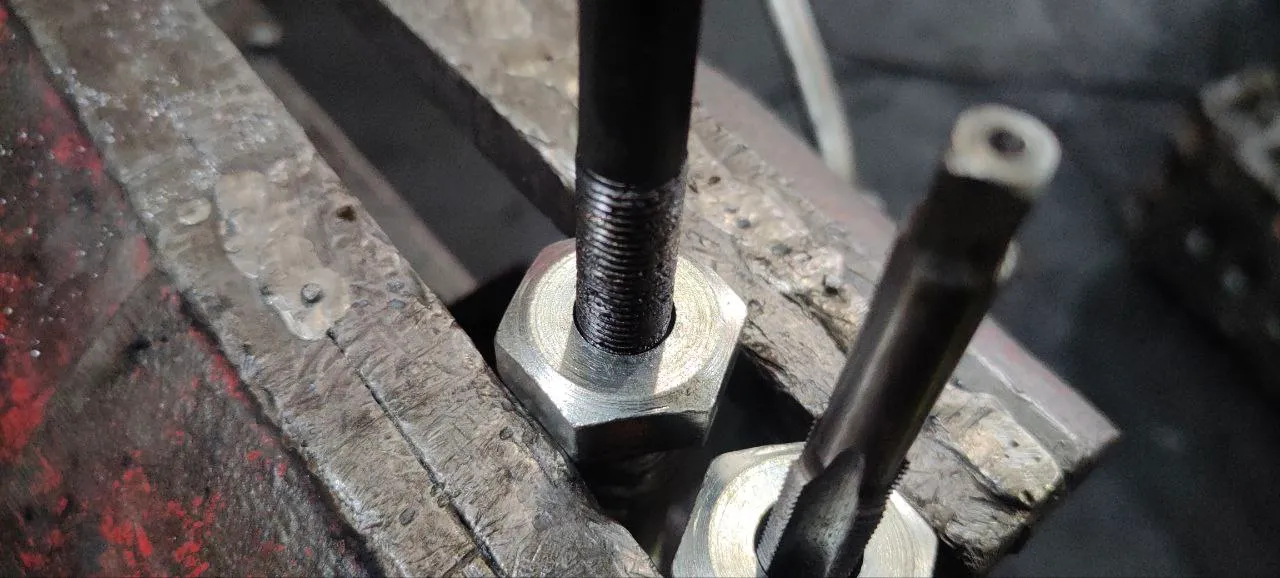
Quinto Paso: Cortamos y torneamos la cabeza de perno 3/4, para el acabado final del tapón para colocarlo en el bloque.
Fifth Step: We cut and turn the 3/4 bolt head, for the final finishing of the plug to place it in the block.
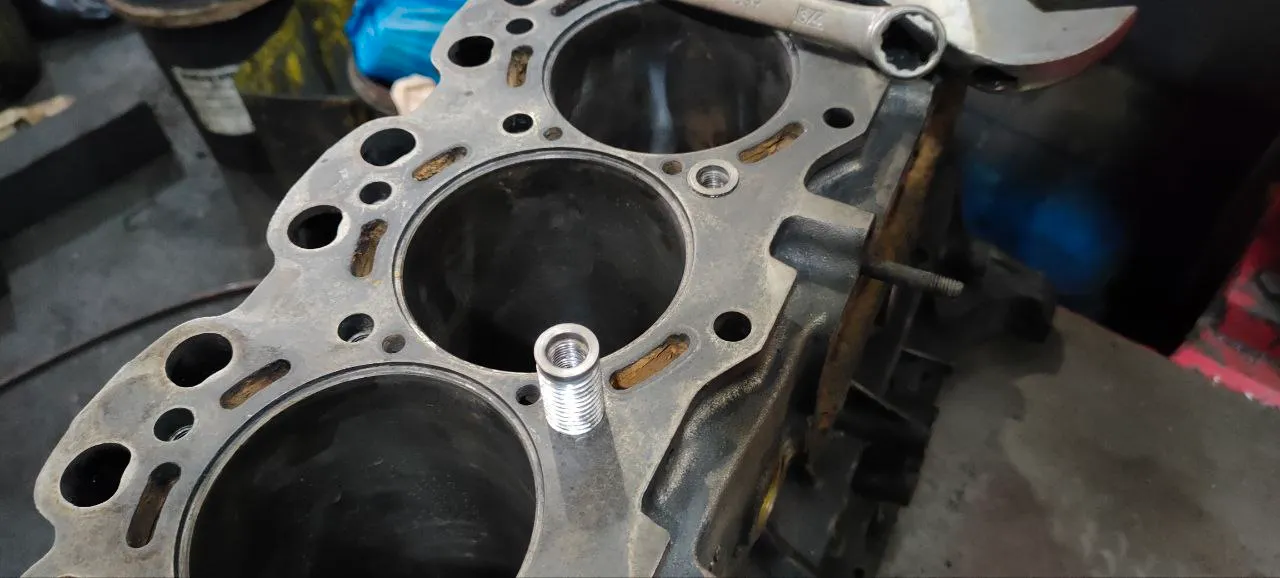
Colocamos los tapones terminador con un adhesivo liquido sujetamos el tapon con un perno 12mm y una tuerca para enroscarlos sin ningún problema.
We place the terminator plugs with a liquid adhesive and fasten the plug with a 12mm bolt and a nut to screw without any problem.
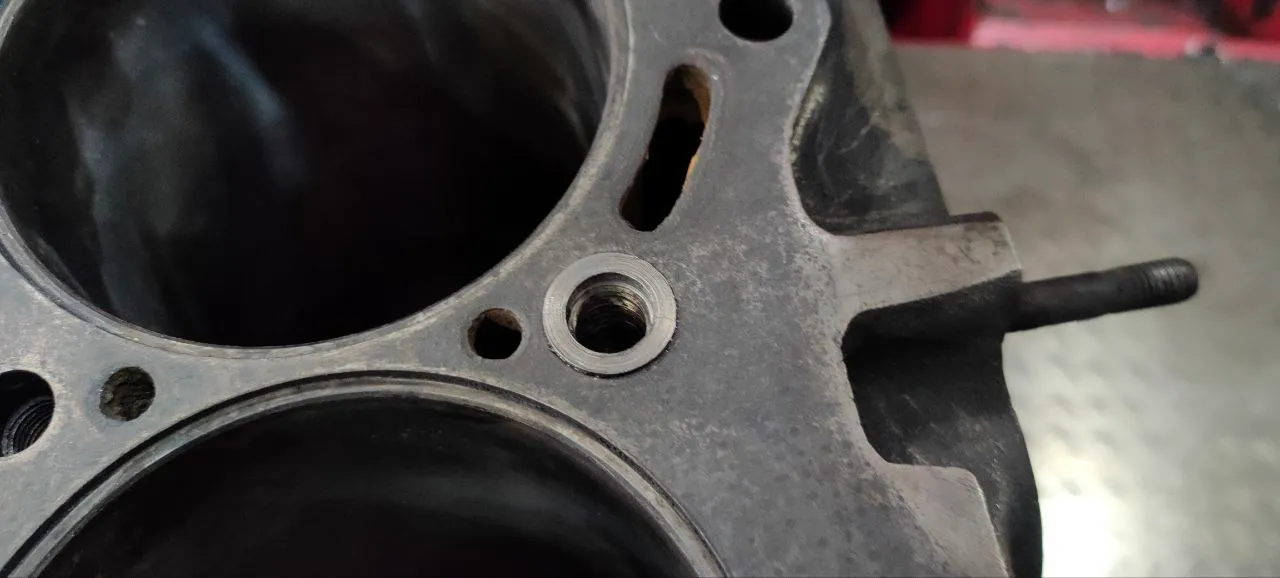
Ese es todo el trabajo. Hasta una nueva oportunidad, espero que les pueda servir esta publicación.
That's all the work. Until a new opportunity, I hope this publication can be useful for you.
